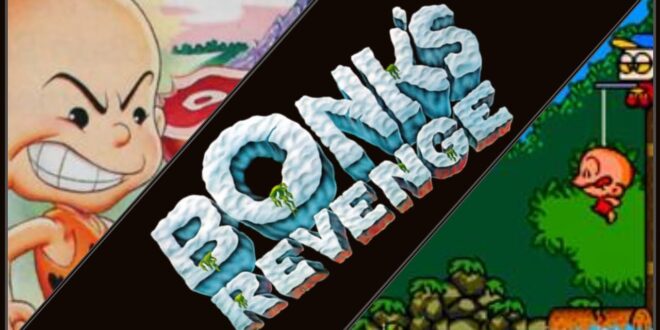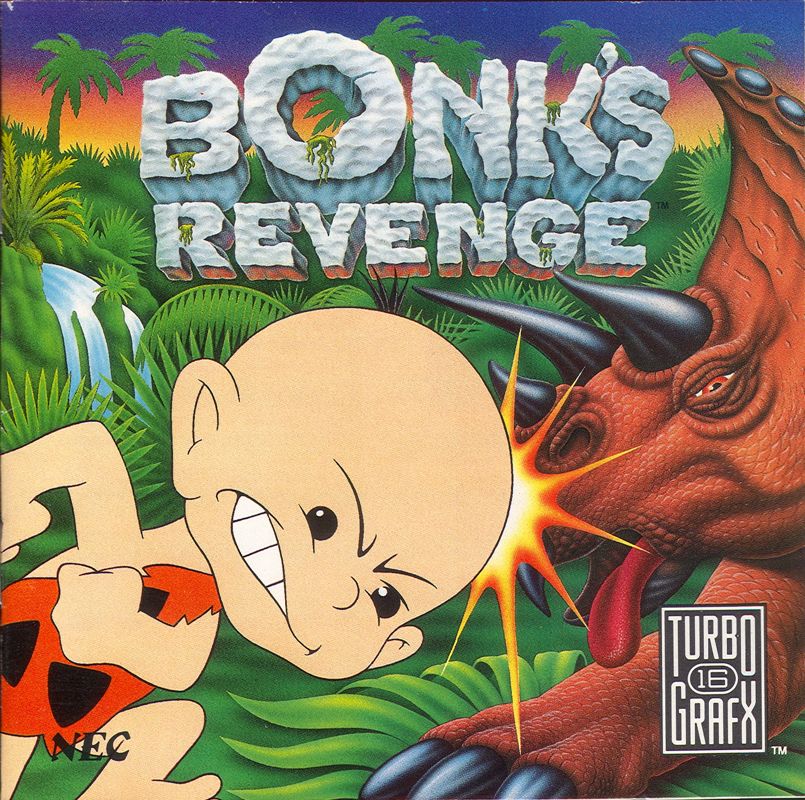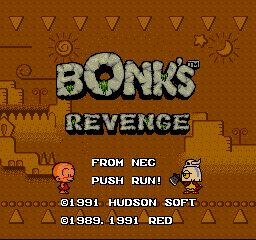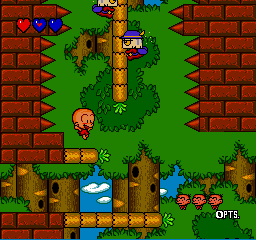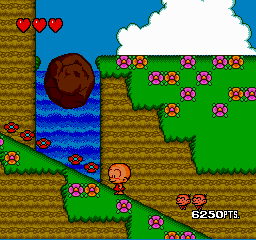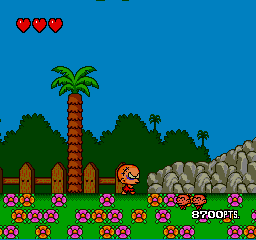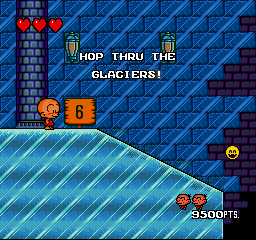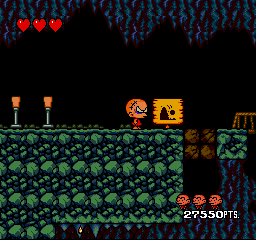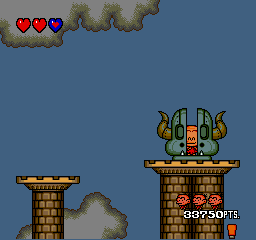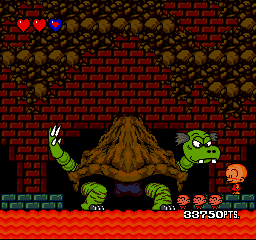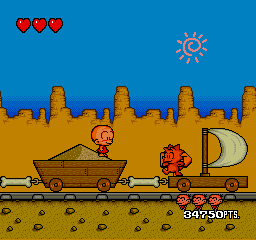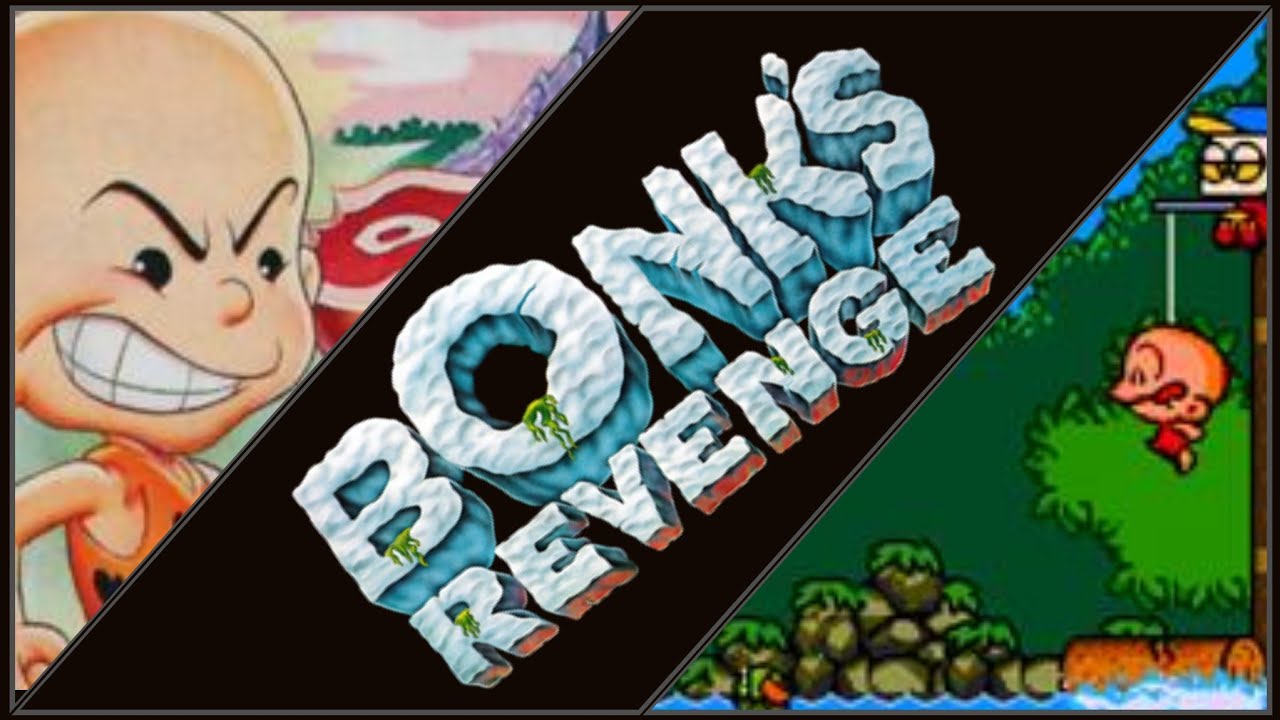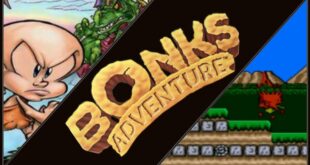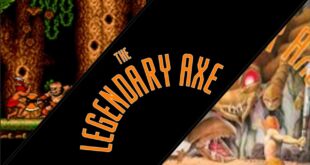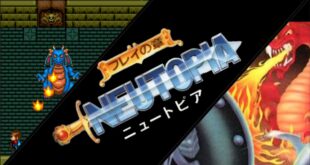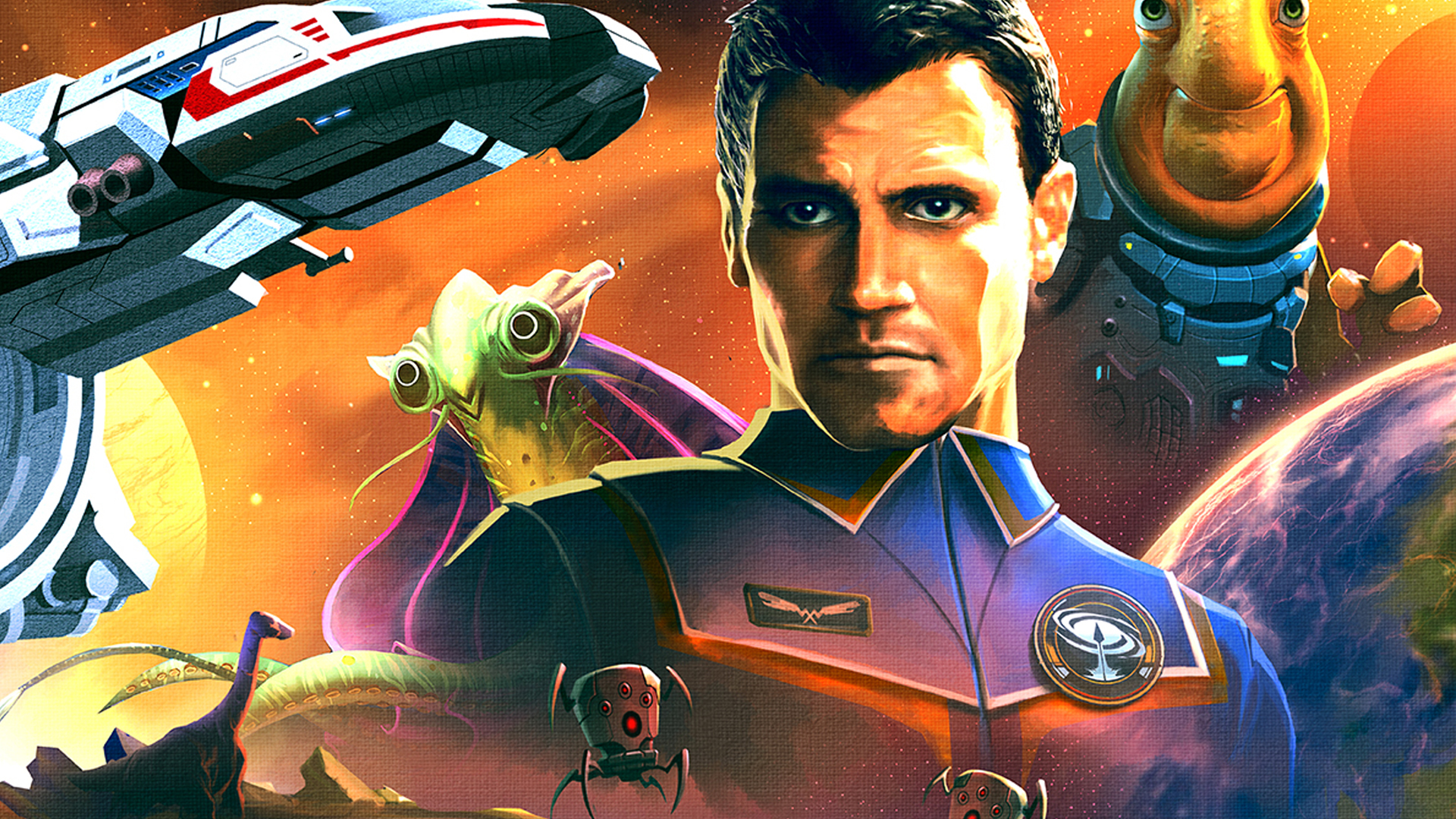(HEY YOU!! We hope you enjoy! We try not to run ads. So basically, this is a very expensive hobby running this site. Please consider joining us for updates, forums, and more. Network w/ us to make some cash or friends while retro gaming, and you can win some free retro games for posting. Okay, carry on 👍)
Bonk’s Revenge: A Timeless TurboGrafx-16 Classic
Introduction
Certain titles stand out as timeless classics that continue to captivate players decades after their release. Bonk’s Revenge, the 1991 sequel to Bonk’s Adventure for the TurboGrafx-16, is undoubtedly one such game. Developed by Red Company and Atlus, and published by Hudson Soft, this prehistoric platformer has aged remarkably well, offering a delightful blend of quirky humor, challenging gameplay, and charming visuals that continue to impress even by today’s standards.
Developer Background
Red Company, the primary developer behind Bonk’s Revenge, was a Japanese video game development studio known for creating innovative and entertaining games. Working in collaboration with Atlus, a company that would later become renowned for its role-playing games, Red Company crafted a sequel that improved upon the original in nearly every aspect.
Hudson Soft, the publisher, was a major player in the Japanese video game industry, responsible for creating the TurboGrafx-16 console (known as the PC Engine in Japan) and publishing many of its most popular titles. Their commitment to quality is evident in the polished nature of Bonk’s Revenge.
For more information on the TurboGrafx-16 and its game library, visit: TurboGrafx-16 Wikipedia Page
Story
The narrative of Bonk’s Revenge, while simple, sets the stage for the prehistoric adventure that follows. Our hero, Bonk, a bald caveman with an impressively hard head, must once again save the Moon Princess Za from the nefarious King Drool. This time, King Drool has not only kidnapped the princess but also stolen all the world’s smileys (the game’s equivalent of coins or rings in other platformers).
Bonk’s journey takes him through various prehistoric landscapes, from lush jungles and scorching deserts to icy tundras and even the inside of a massive dinosaur. The story unfolds through brief cutscenes between stages, adding context and humor to Bonk’s quest.
Gameplay
The core gameplay of Bonk’s Revenge builds upon the solid foundation laid by its predecessor. Players control Bonk through side-scrolling levels, using his hard head to defeat enemies and overcome obstacles. The primary attack remains Bonk’s signature head-butt, which can be performed on the ground or in mid-air.
One of the most significant improvements in Bonk’s Revenge is the expanded move set. Bonk can now climb walls by biting them, adding a new dimension to level exploration. The power-up system has also been refined, with Bonk able to consume meat to transform into more powerful versions of himself. These transformations include a larger, heavier Bonk that can smash through certain walls, and a lightning-fast version that can zoom through levels.
The level design in Bonk’s Revenge is particularly noteworthy. Each stage is filled with secrets, alternate paths, and hidden bonuses, encouraging exploration and replay. The difficulty curve is well-balanced, starting off relatively easy but gradually increasing in challenge, with later levels requiring mastery of Bonk’s full repertoire of moves.
Graphics and Sound
Visually, Bonk’s Revenge is a testament to the capabilities of the TurboGrafx-16. The colorful, cartoonish graphics are a significant step up from the original game, with larger, more detailed sprites and beautifully drawn backgrounds. Each world has its own distinct visual theme, from the candy-colored platforms of the early stages to the eerie, atmospheric later levels.
The animation is particularly impressive, with Bonk and his enemies moving fluidly across the screen. Special attention was given to Bonk’s expressions, which change comically as he attacks or gets hit, adding an extra layer of charm to the character.
The audio design complements the visuals perfectly. The catchy soundtrack, composed by Shinichi Seya, features memorable tunes that capture the prehistoric setting while remaining upbeat and energetic. Sound effects are crisp and satisfying, from the “bonk” of Bonk’s head-butt to the comical cries of defeated enemies.
Reception and Legacy
Upon its release in 1991, Bonk’s Revenge was met with widespread acclaim. Critics praised the improved graphics, expanded gameplay mechanics, and overall polish compared to the original game. It quickly became one of the must-have titles for the TurboGrafx-16.
Sarah Johnson, a long-time member of the Retro Replay community, reflects on her first experience with the game:
“I remember the first time I played Bonk’s Revenge. It was like nothing else on the market at the time. The colorful graphics, the wacky protagonist, and the sheer fun of bonking enemies with your head – it all came together to create this unforgettable experience. Even now, decades later, I still find myself coming back to it. It’s a game that truly stands the test of time.”
The game’s success led to further sequels and spin-offs, cementing Bonk as one of Hudson Soft’s most recognizable mascots. While the TurboGrafx-16 may not have achieved the same level of market penetration as its competitors, Bonk’s Revenge remains a shining example of the quality software available for the system.
Interesting Facts
- Bonk’s Revenge was also released for the TurboGrafx-16’s handheld counterpart, the TurboExpress, making it one of the most advanced portable games of its time.
- The Japanese version of the game, known as “PC Genjin 2,” features slightly different level designs and enemy placements compared to the Western release.
- Bonk can collect tiny versions of himself throughout the levels, which grant an extra life when 20 are collected – a unique twist on the common lives system in platformers.
- The game features a hidden sound test mode, accessible through a cheat code, allowing players to listen to the game’s music and sound effects.
Replay Value
One of the most impressive aspects of Bonk’s Revenge is its substantial replay value. The numerous secret areas and multiple paths through levels encourage players to revisit stages to uncover everything the game has to offer. The varied power-ups also provide different ways to approach each level, adding to the replayability.
Additionally, the game features a scoring system based on collecting smileys and defeating enemies, giving score-chasers a reason to perfect their runs through each stage. The well-balanced difficulty ensures that returning to earlier levels remains enjoyable, while the later stages provide a stern challenge for those seeking to master the game.
For more information on Bonk and other TurboGrafx-16 games, visit: TurboGrafx-16 Enthusiasts Forum
Conclusion
Bonk’s Revenge stands as a shining example of 16-bit era platforming done right. Its charming graphics, infectious soundtrack, and refined gameplay mechanics come together to create an experience that remains enjoyable three decades after its initial release. While the TurboGrafx-16 may not have achieved the same level of success as its competitors, games like Bonk’s Revenge demonstrate the system’s capabilities and the high quality of its software library.
For modern gamers looking to explore the history of platformers or TurboGrafx-16 enthusiasts seeking to revisit a classic, Bonk’s Revenge offers an adventure that has stood the test of time. Its influence can be seen in many modern platformers that emphasize exploration and character personality, cementing its place in video game history.
As we look back on Bonk’s Revenge, it’s clear that its success lies not just in its technical achievements, but in its ability to create a world and character that players genuinely enjoy inhabiting. The game’s blend of challenge, humor, and creativity continues to resonate with players, proving that great game design is truly timeless. Whether you’re a long-time fan or a newcomer to the world of Bonk, this TurboGrafx-16 gem is well worth your time and stands as a testament to the golden age of 2D platformers.
The verdict
Graphics - 94%
Sound - 82%
Gameplay - 84%
Replay value - 88%
87%
I remember the first time I played Bonk's Revenge. It was like nothing else on the market at the time. The colorful graphics, the wacky protagonist, and the sheer fun of bonking enemies with your head – it all came together to create this unforgettable experience. Even now, decades later, I still find myself coming back to it. It's a game that truly stands the test of time.
 Retro Replay Retro Replay gaming reviews, news, emulation, geek stuff and more!
Retro Replay Retro Replay gaming reviews, news, emulation, geek stuff and more!
